With millions of apps distributed worldwide (and growing), you have to wonder: how do apps make money?
While not every app is meant to make money, even the simplest apps can have a few effective monetization strategies up their sleeves. Whether it’s showing a small banner ad in a free calculator app or offering paid subscription tiers for an advanced health monitoring app, there are plenty of ways for apps to make money.
However, app monetization strategies are about as varying as the apps themselves. In this article, we’ll cover the basics of app monetization, compare monetization methods, and explore different strategies for making the most of your app – or the most money, that is.
How Do Apps Make Money?
Apps might use a number of different methods to make money — and it goes way beyond simply charging an upfront fee. In fact, “free” apps can be some of the most lucrative of them all!
So how does it work? How can a free app wind up making thousands — or even millions — of dollars?
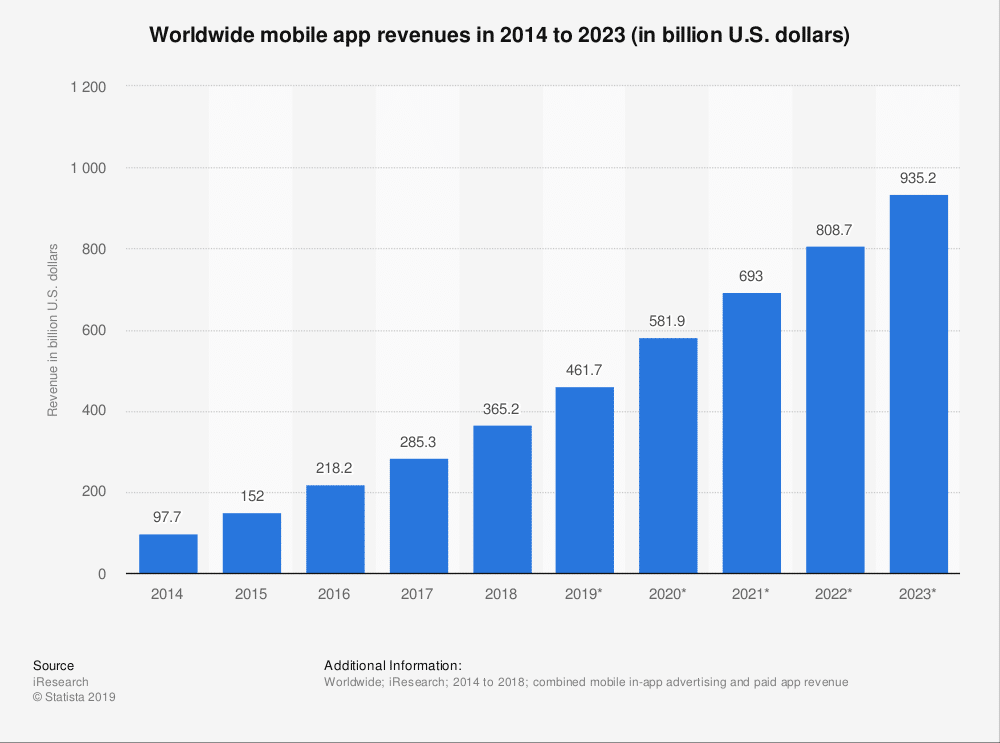
The answer comes down to app monetization strategies. App monetization is exactly what the name suggests: making your app make money (in other words, making it monetizable). While charging an upfront fee is perhaps the most obvious way to monetize your app, there are plenty of other effective strategies to choose from.
But before we get down to business, let’s first explore app monetization itself.
What Is App Monetization?
App monetization is the process of generating revenue from app users.
While strategies for app monetization can vary, most successfully monetized apps integrate several different monetization methods. The right strategy comes down to understanding your users, how and why they use your app, and, of course, what the app does in the first place.
App monetization strategies often involve some form of advertising.
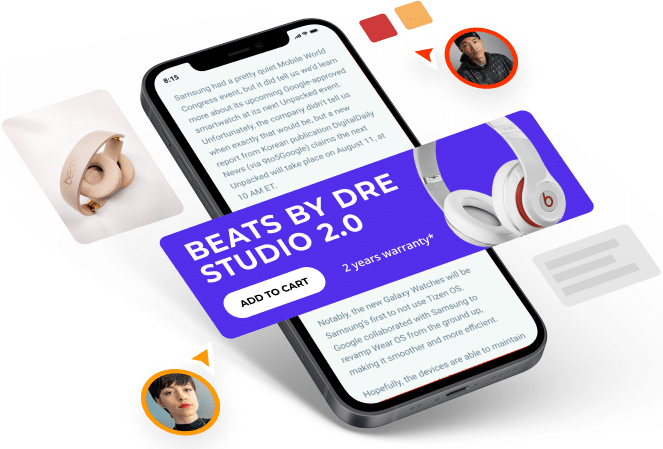
For example, many apps earn revenue by displaying banner ads at the top of the screen, rewarding users with points for watching a video commercial, or even allowing a third-party ad network to collect user data for analytics or future marketing campaigns.
But that’s just one of many ways to make money from an app — some apps are already inherently monetized. These apps might include personal shopping apps or those that are mobile extensions of an existing ecommerce presence (such as eBay or Amazon).
In most other cases, however, apps make money through in-app purchases or subscriptions. But even the most standard monetization strategies can take on many forms, especially as mobile apps are expanding beyond mobile devices into televisions, cars, smart appliances, and more.
As a result, anyone looking to monetize an app may need to start thinking beyond smartphones and mobile devices. While mobile devices will likely offer the most opportunities for engagement (read: monetization) for some time to come, other devices may already begin to offer better opportunities for certain products, services, or experiences.
In any case, app monetization is a big topic. But before we dive even deeper, you’re probably wondering how much you can expect to make.
How Much Money Can Free Apps Make?
Long story short: It depends.
While there are many free apps that easily make millions in annual revenue, that’s usually the exception to the norm. However, that doesn’t stop thousands of free apps from making at least thousands of dollars in revenue every month.
But how much can you expect to make?
The actual figure varies widely from app to app, with even the same app monetization model (revenue-per-click, revenue-per-thousand impressions, etc.) varying between app genres, number of users, device(s) used, and country of origin.
Typically, however, both app owners and advertisers use eCPM (effective cost per mille or effective cost per thousand impressions) as the key metric for determining impression-based revenue.
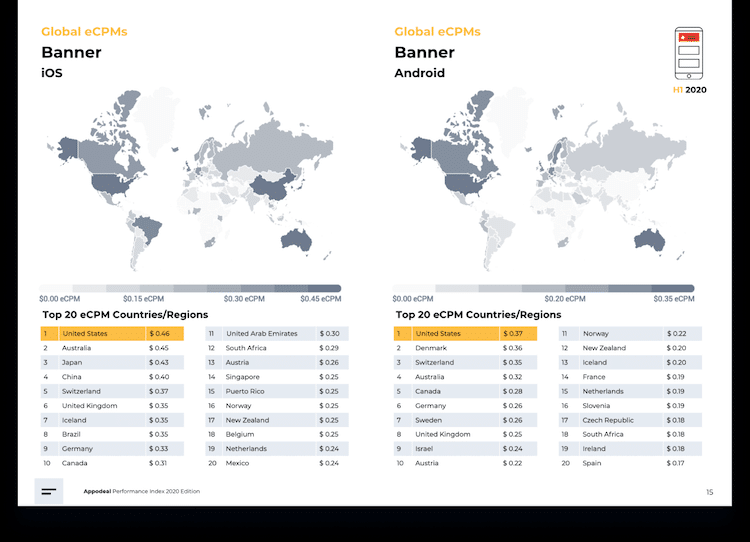
So, how much money do apps make from ads on average?
In 2020, the average eCPM for banner ads in mobile apps in the United States ranged from $0.37 for Android apps to $0.46 for iPhone apps. That means a US-based iPhone app displaying a banner ad receiving 5,000 impressions per day would receive an average daily revenue of $2.30.
That’s not a lot, but it’s also not abnormal — especially considering that banner ads are just one of many different types of ads an app might use to monetize its user experience. While other types of ads, such as reward videos, can generate much higher eCPMs, many mobile app developers find themselves turning to paid, freemium, and subscription models to guarantee a strong source of revenue.
Free vs Premium vs Freemium Model
Why offer free apps when you could just charge users upfront and get revenue immediately?
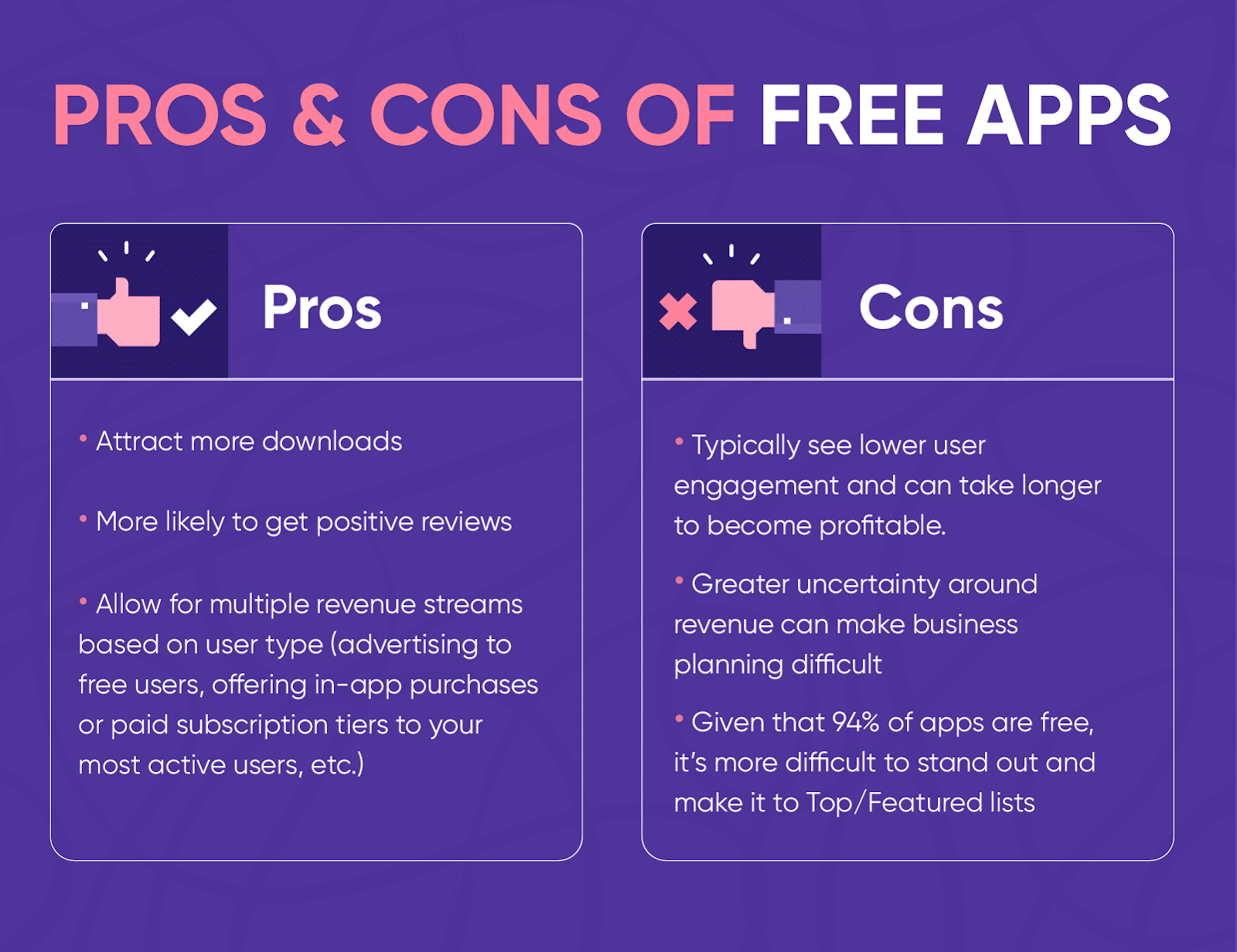
Offering an app for free can, in fact, come with a lot of benefits. For one, they attract more downloads and are more likely to get positive reviews due to their lack of a cost of entry.
With more users likely to download and use a free app, developers can use the extra traffic to employ multiple revenue streams based on different types of users. Where the app might display ads to free users by default, it might also offer paid tiers of membership to remove ads, unlock different app features, and so on.
But creative revenue streams are only half the battle when it comes to monetizing free apps. Developers must also deal with the inherent uncertainty around revenue, along with an overall lower rate of user engagement. Plus, with the vast majority of available apps already being free, it might be difficult for new apps to stand out or reach the top tiers in app stores.
Freemium pricing models (free/premium) are one effective way to overcome some of these drawbacks.
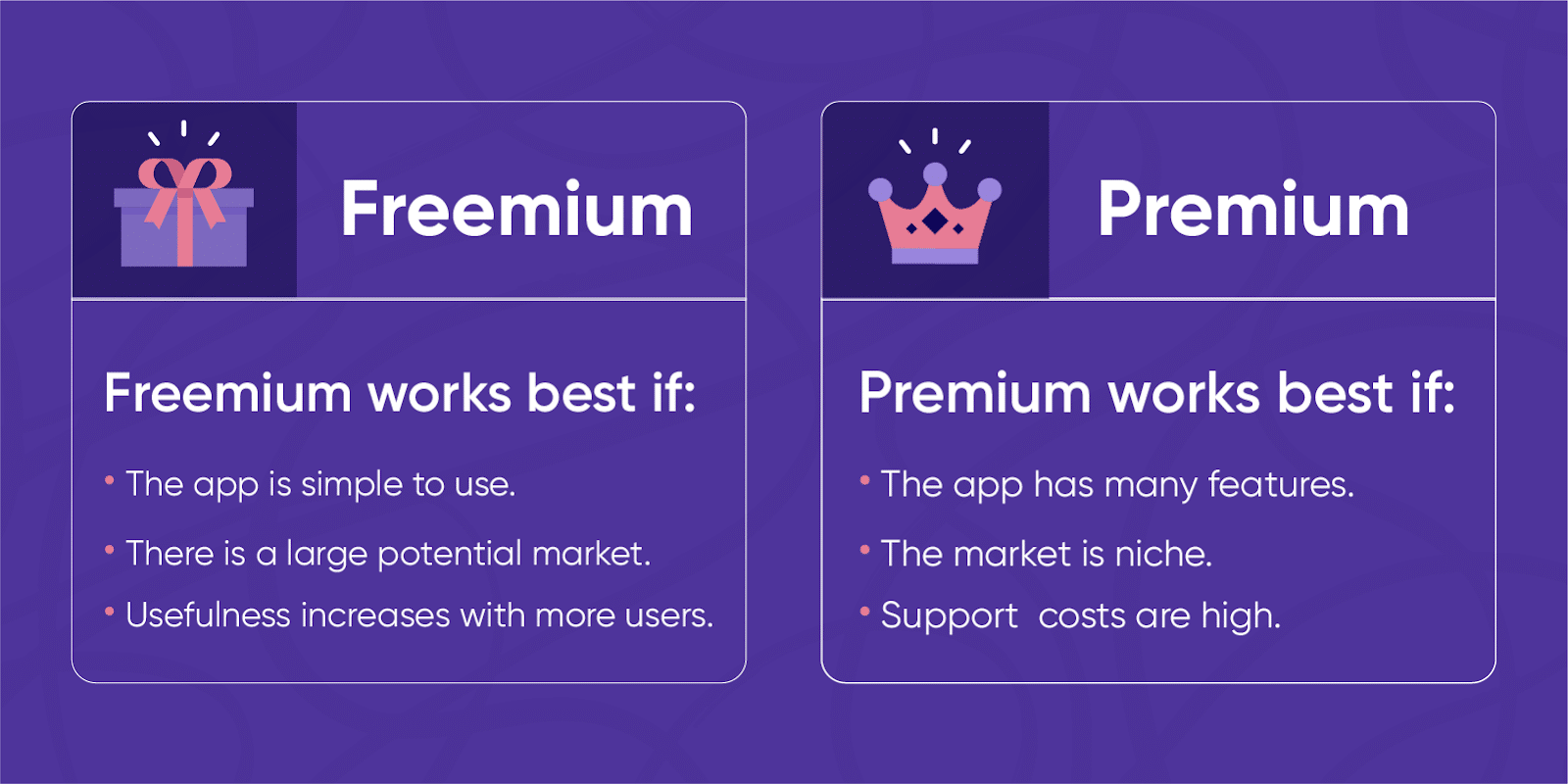
In the freemium model, users get the basic features of the app for free but then have the option to access advanced premium features at an extra cost. This model is employed extensively in the app market, ranging anywhere from in-game purchases to paid subscription tiers.
Generally, freemium apps are both simple to use and have a large potential market. This allows app owners to maintain an extremely simple, bare-bones offering that satisfies all users but then offers additional features (and earn additional revenue) for different types of users who may want something more.
While freemium can offer the best of both free and premium, it’s not the ideal model for all apps — in fact, premium can sometimes make the most sense.
Premium is best for apps that are highly specialized and satisfy a market niche with specific needs. In these cases, there usually aren’t many existing apps that satisfy these needs, and prospective users are already willing to pay an upfront premium for the premium features they already know they need.
Of course, that doesn’t mean apps need to stick to a single mobile app revenue model or pricing strategy. In the next section, we’ll explore some of the best mobile app monetization strategies proven to generate revenue.
Top 10 App Monetization Methods
Now that we know the basics of app monetization and the different types of apps, it’s time to explore some of the most popular ways to make money from apps.

There’s a business model and monetization plan for nearly every app. Check out some of the most popular below.
1. Freemium Apps (Paid Features)
As we covered earlier, offering a mix of free and paid features — freemium — is an extremely popular monetization strategy.
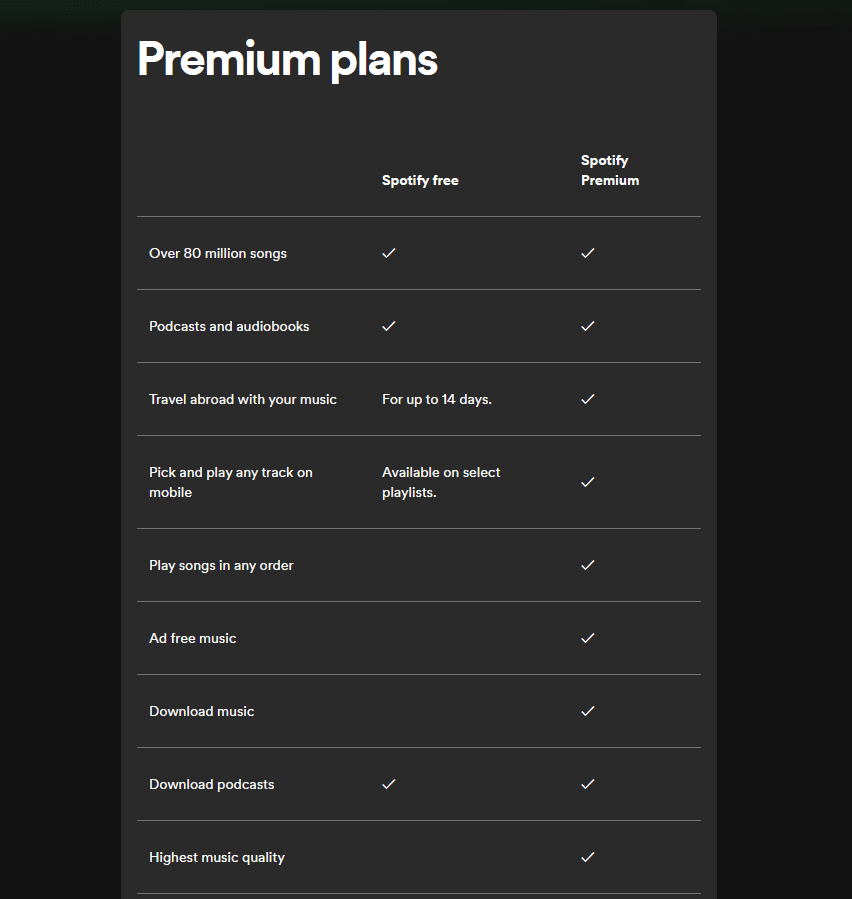
To see why this is, put yourself in the shoes of a potential user. With so many different apps already available (and possibly for the same thing), wouldn’t you feel better if you could try a version of the app before committing to a purchase?
Free versions are essentially the “free trial period” of the app world. While most users will be fine with the free trial for as long as they use the app, it’s possible that enough users will purchase the premium version to generate stable revenue. For example, the freemium app Spotify earned over $12 billion in 2022.
2. Premium Apps (Paid)
Some developers ask themselves, “how do apps make money without ads?” The answer is by charging users to download the app.
While not everyone wants to pay an upfront price for an app download, many users won’t think twice if the app is exactly what they need — or if that app’s reputation precedes itself.
As a result, successfully adopting a premium model usually requires satisfying a market niche with a loyal customer base. Once a premium app becomes the “go-to” solution for a particular need, the premium price doesn’t become such a big deal.
Newer apps without an established reputation can also transition into the premium model by offering limited free trials.
3. In-App Purchases
Like freemium, offering a free app with extra in-app purchases is an extremely effective way to drive revenue.
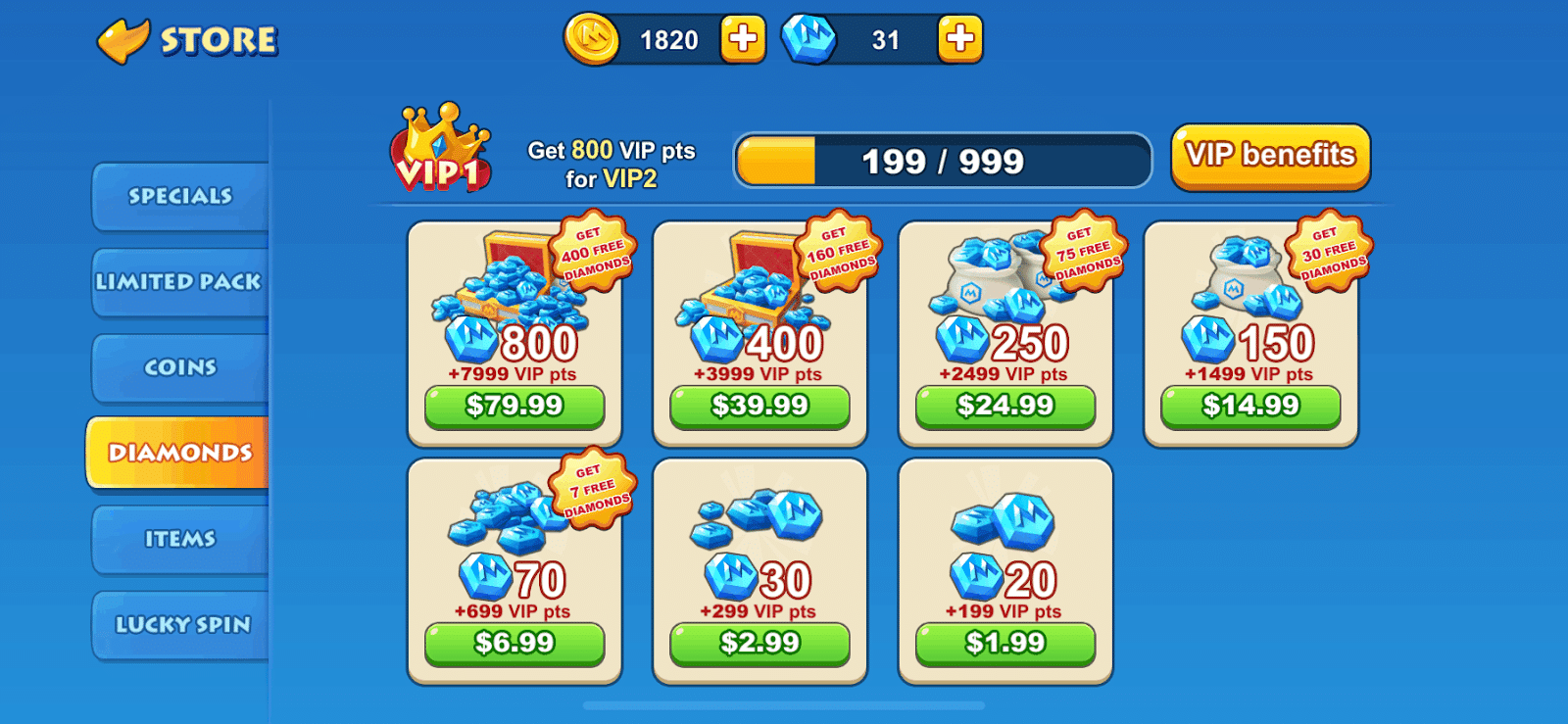
Game apps are one very popular example of this pricing strategy, where players make digital transactions to purchase game currency or in-game virtual items such as special loot, abilities, or cosmetics. The popular game Candy Crush Saga earned over $600 million in 2022 alone using this model.
Of course, the in-app purchases model can work just as well for a non-game app. However, in-app purchases are considered “extra content” that won’t compromise the default app experience.
4. Paid Subscription Models
Different users have different needs — so why not cater to all of them with different subscription models?
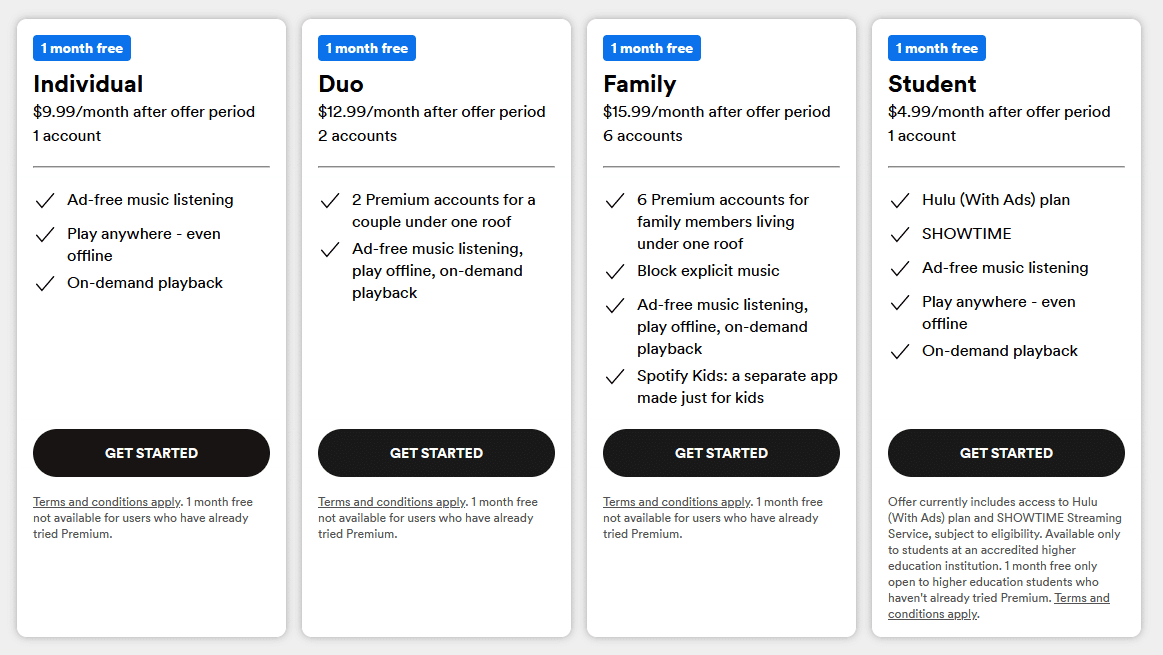
Feature-rich apps catering to a diverse range of users often use an app subscription model to deliver a more tailored customer experience. Alternatively, some subscription apps might offer a free trial for a limited period of time before requiring a subscription plan (kind of like a certain number of free articles before having to sign up for a news subscription).
Subscriptions can be an extremely effective way of retaining long-term users, especially if you offer the right value for the right price.
5. In-App Ads and Sponsorships
The in-app advertising model is used by the vast majority of apps on the market in some way or another.

From simple banner ads to full-screen ads and video rewards, app advertising comes in all shapes and sizes — and different revenue tiers.
Depending on the app, its users, and any associated products, mobile ad networks might offer a wide range of incentives to get their ads in front of engaged users. Starting a Google Adwords campaign is one easy and effective way to see how much you can make.
Similarly, many apps use a company partnership or sponsorship model as a means of generating revenue upfront. Having a sponsorship can also help give new apps a much-needed sense of reputation and authority.
6. Email Lists
With the number of active email users set to hit 4.37 billion in 2023, building email lists from your app users can be a great way to build multiple revenue streams and support digital marketing strategies. This is especially true since most email users don’t change their email addresses and check their inboxes regularly.
Gathering emails usually just comes down to asking. If your app requires the user to set up an account or subscribe, then you’re already halfway there: all you need to do is find ways to leverage email marketing, whether it’s notifying them of sales or reminding them to engage more with the app.
7. Ecommerce
Ecommerce is a natural revenue stream for many apps.

Under an ecommerce model, your app essentially becomes an online marketplace for whatever you’re selling. Some apps can take this a step further to aggregate shopping results, such as apps that help users search for items across multiple retailers. Ecommerce apps are also popular for affiliate marketing.
8. SMS and Text Marketing
Since apps are usually on a user’s phone, SMS and text marketing is often a natural avenue for boosting engagement.
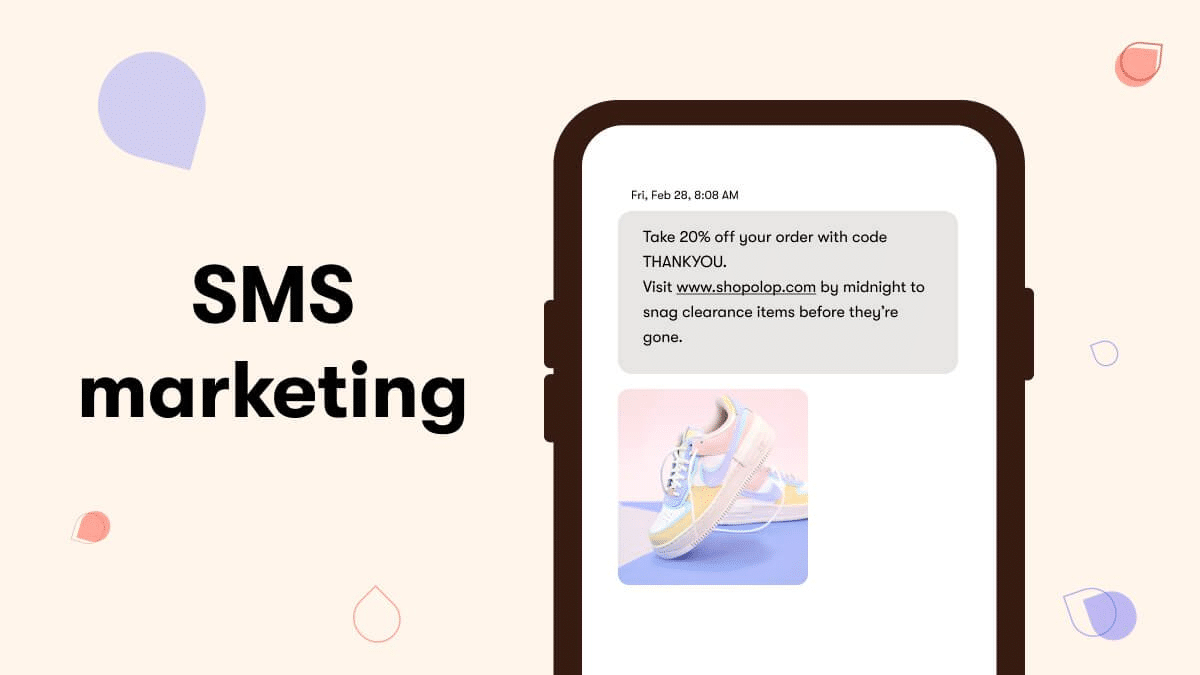
While you won’t get paid for sending texts to your users, it can be an easy and effective way to quickly send reminders, updates, alerts, and promotions to your entire user base.
Texts can be used to entice your user base to engage with your app in a way that generates revenue, such as getting them to view new content (and watch ads), check out a discounted product (and buy it), or preview exclusive features (and then subscribe).
9. White Labeling
Up-and-coming app developers and big brands have more to offer each other than they might realize.

A new app development idea may be great, but it might have a hard time taking off without the right support and backing.
As a result, a mobile app development company might turn to existing business owners to buy out their app and put it under their own label. This provides the development company with a quick source of revenue while giving existing businesses a new and exciting product.
10. Data Licensing
Users themselves can also be an excellent source of revenue — particularly their data.
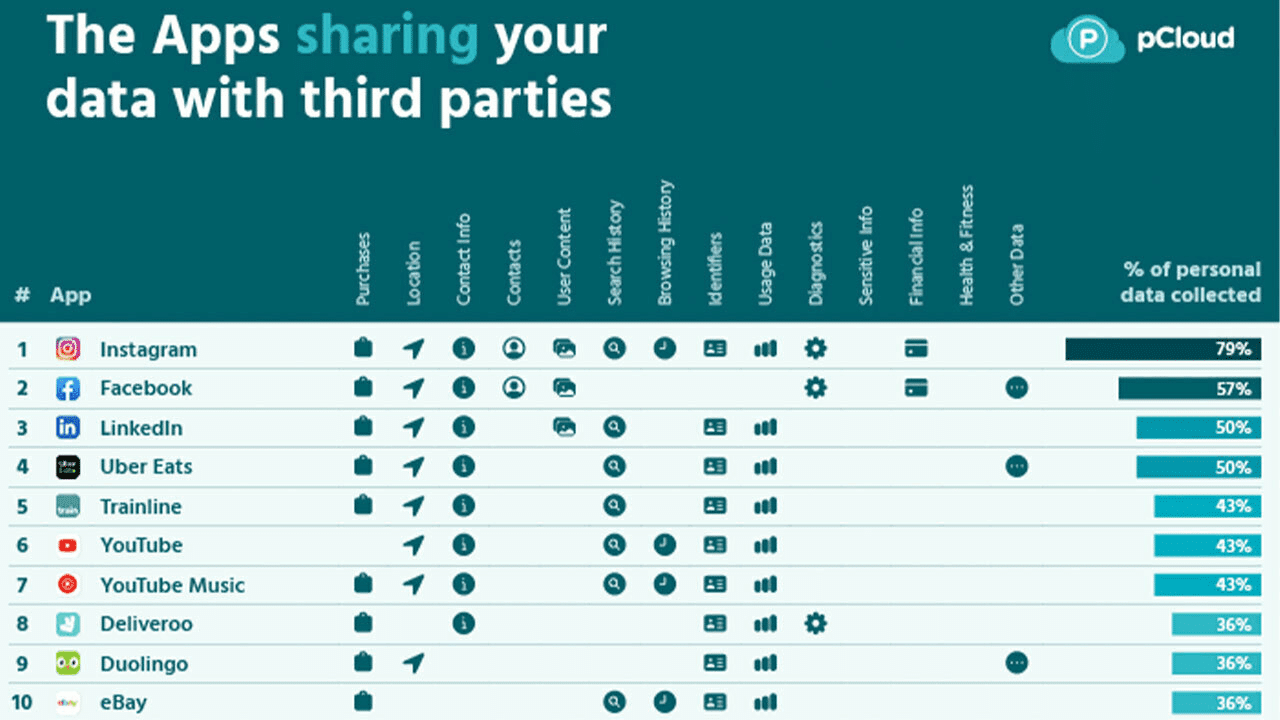
With data driving just about everything, more and more businesses are paying big bucks to get the right user data. With mobile devices being a great source of behavioral data, popular apps can quickly become goldmines for third parties to study trends.
Enticing as this may sound, tread carefully: Your app’s user data may be protected under both federal and international law unless they sign a user agreement that gives you ownership.
How To Choose a Winning Monetization Strategy
Needless to say, there are plenty of app monetization methods to choose from, but which one is right for your app?
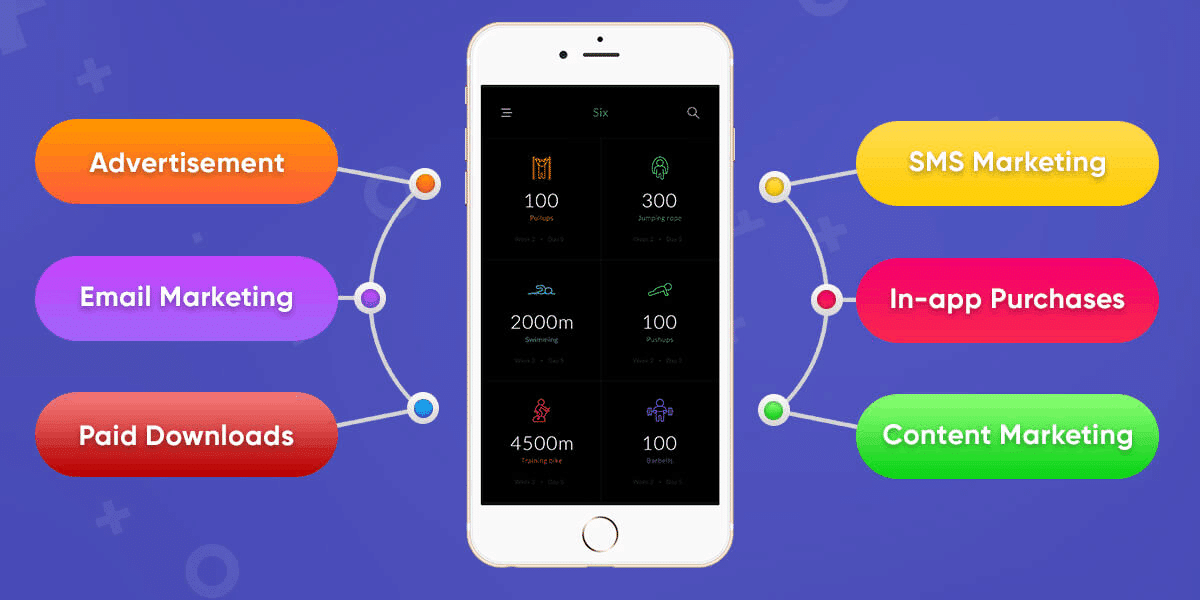
The answer, of course, depends on your app and the value it provides your users. While there’s no right or wrong answer, considering the following can help you hone in on a winning monetization strategy.
Identify Your App’s Unique Value
Your app’s purpose and the value it provides your users is the single most important factor in choosing how to monetize it.
For example, a simple calculator app probably wouldn’t want to charge users upfront. In that case, it would likely be monetized using minimally intrusive banner ads or through sponsorship from a calculator manufacturer or educational resource.
Alternatively, an advanced graphing calculator app could easily justify an upfront fee if it provided enough premium features and mathematical functions to justify the price.
Analyze Your Users
Understanding your users and their wants, needs, and behaviors is another crucial factor.
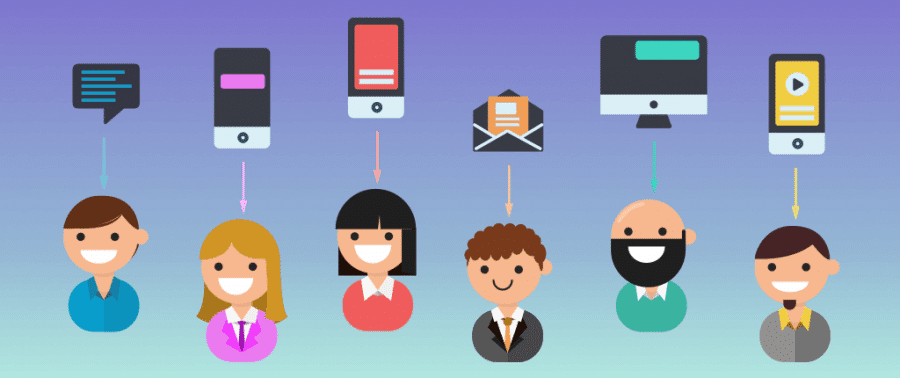
In fact, a monetization strategy that might seem right for a certain app might be wrong if it doesn’t sit well with active users. For example, smartphone users with smaller screens might not want endless pop-up ads cluttering their view, while Android users probably won’t want to pay more to integrate iPhone app content.
User spending habits can also make a big difference in your choice. For example, an app that helps users find deals on groceries probably wouldn’t benefit from having a paid option for additional content.
Learn From What Already Works
When in doubt, you can always look at similar apps to see what’s currently successful. Doing so also allows you to take a closer look at your competition and trends in the mobile app market, which can further help you fine-tune your app’s value and monetization strategies.
User reviews can also help streamline this process by giving insight into user experiences and pain points. For example, a user might have left a one-star review because of overly-intrusive ads or an underwhelming premium experience. Similarly, positive reviews can also inform you of what users will likely respond well to.
Consider Hybrid Strategies
Many successful apps don’t stick to one monetization method. In fact, many can’t because leveraging only one method usually won’t generate enough revenue to deliver a solid return.
There are endless possibilities for hybrid strategies. For example, a freemium app might display ads in the free version but also offer in-app purchases and premium content. That same app could also keep its users informed through text or email and even license their data to interested third parties.
Summary
Now that you’ve seen how apps make money, you’ll understand that app monetization can be a tricky process — and above all, you need to stay flexible.
With managed application hosting from Kinsta, you can quickly deploy, configure, and manage all your apps from one central location. With highly scalable databases and support for unlimited users, Kinsta can help you grow your app from the ground up.
Ready to get started? Sign up for a trial today and get a free $20 hosting credit.



Leave a Reply